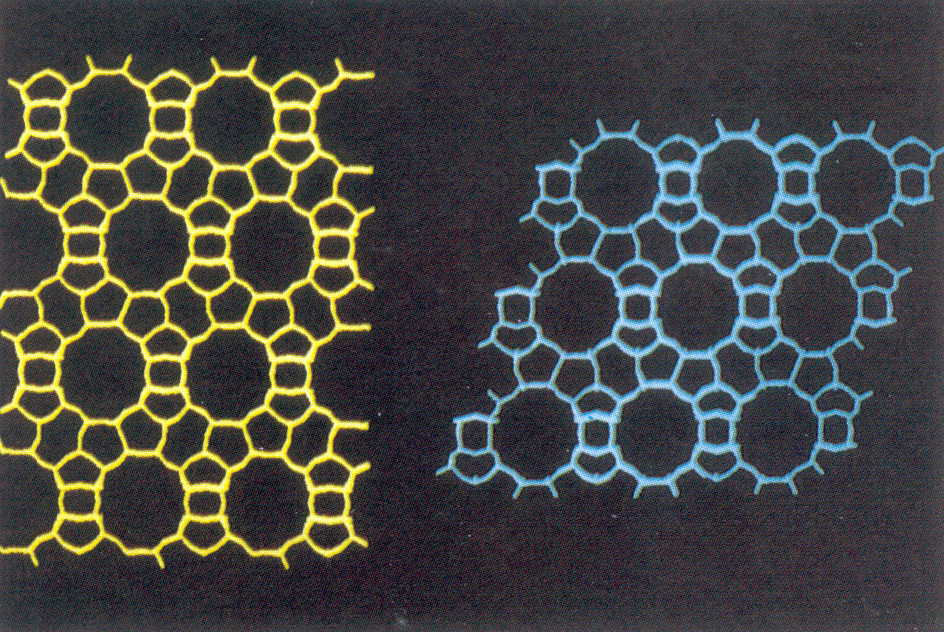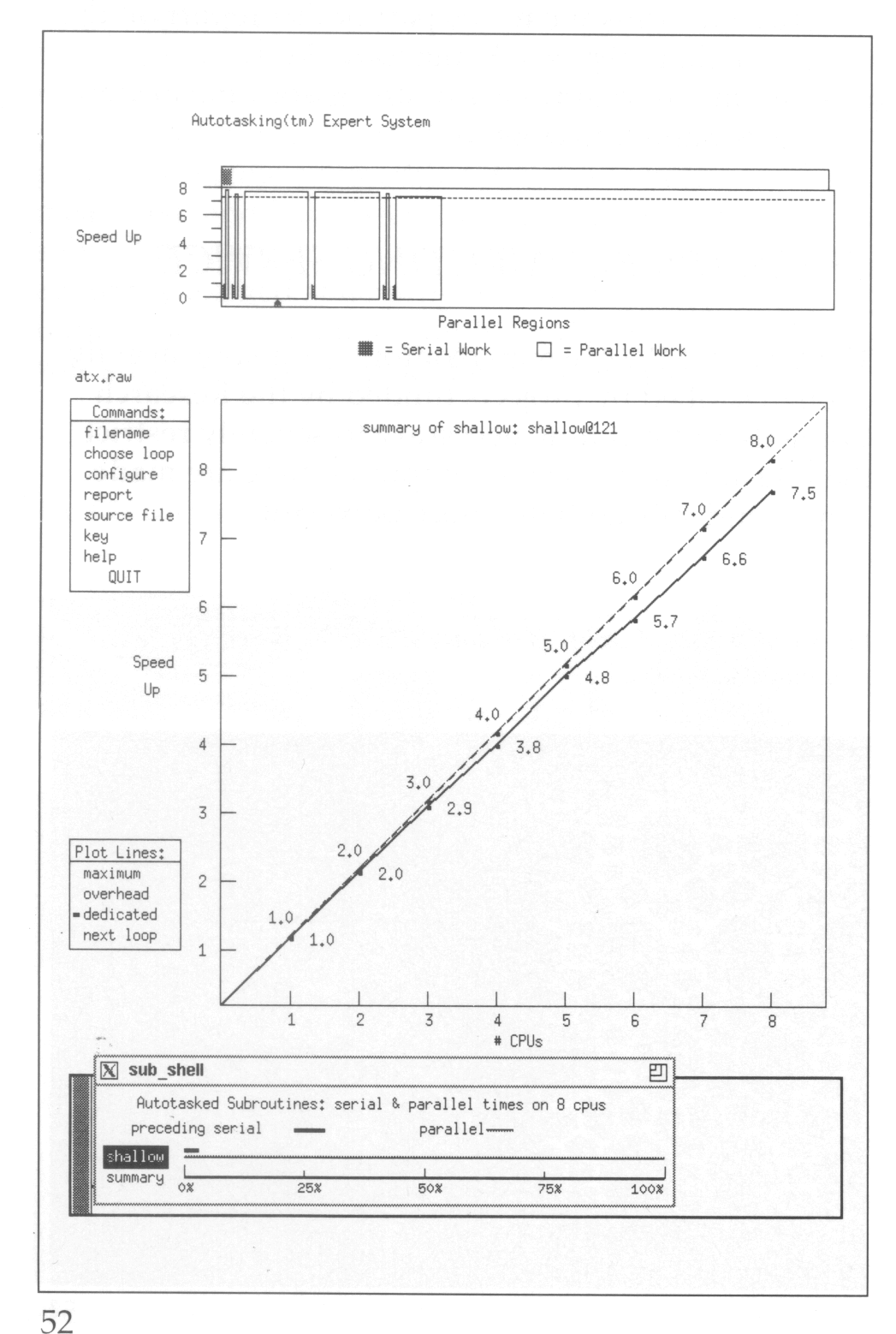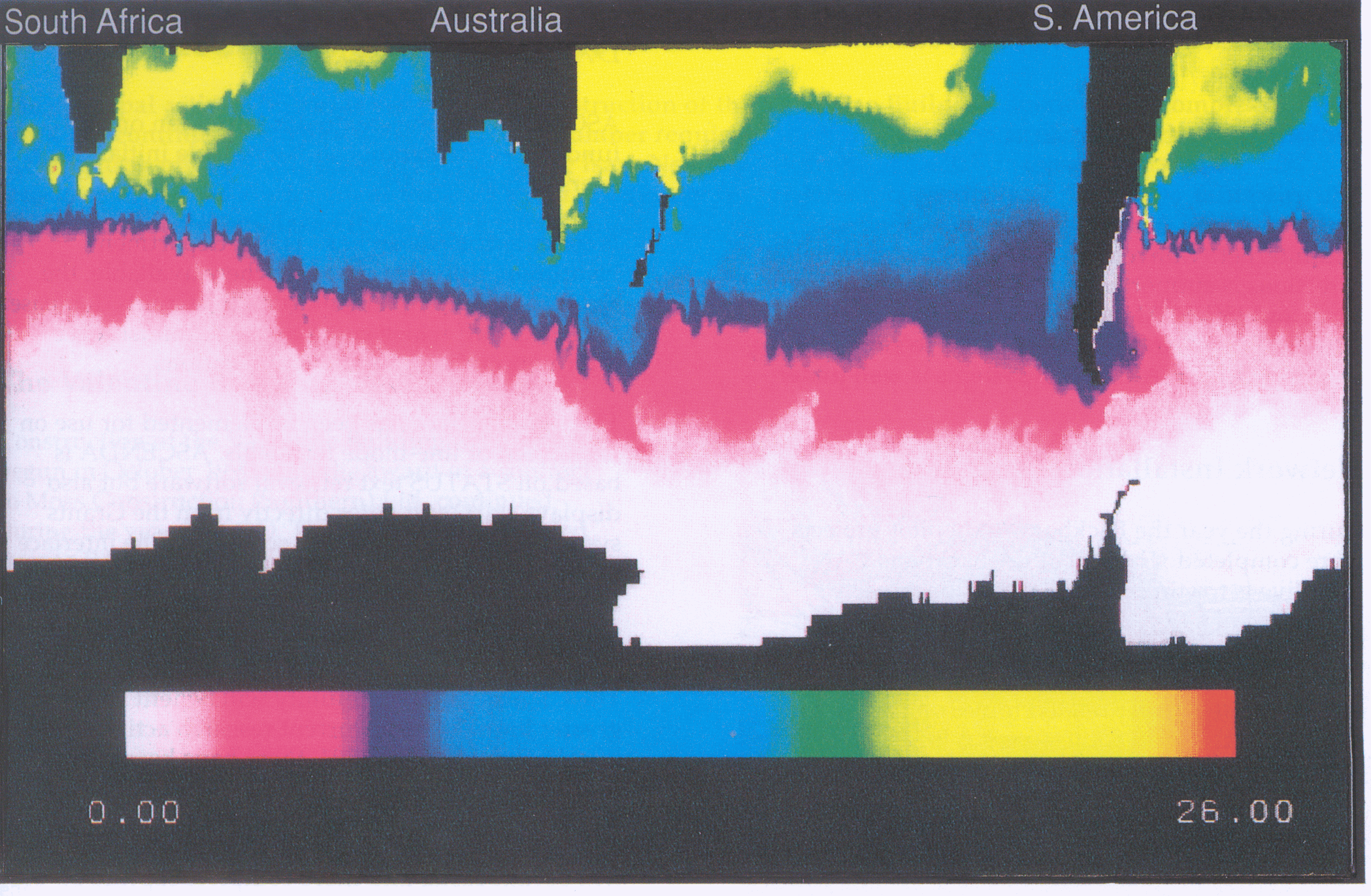

There has been a major move towards interactive supercomputing with the introduction of the JANET IP Service (JIPS) and the new X-window based development tools in UNICOS version 6.
The conclusion of the two year Joint Study with IBM on the exploitation of the 3090/600E was marked by a major seminar addressed by the Minister with responsibility for science, Mr Alan Howarth MP, and senior figures from SERC and IBM.
During the year the two year Joint Study Contract with IBM was concluded. The 3090/200E purchased by SERC was upgraded to a 600E with six vector features to demonstrate the value of the IBM processing performance coupled to exceptionally large memory (over 1 Gbyte).
The climax of the Joint Study was a seminar at RAL in May attended by about 100 academic and industrial visitors and 60 IBM and SERC staff. Keynote speakers included SERC chairman Sir Mark Richmond and Dr Geoff Robinson of IBM. The main address was by Mr Alan Howarth, Parliamentary Under Secretary at the Department of Education and Science, who thanked IBM for its generosity and described the Study Contract as a model for collaboration between academe and industry. The afternoon session concentrated on scientific results from the Joint Study, there being time for only four of the projects to be presented:
• Prof Richard Catlow of the Royal Institution described the role of supercomputers in understanding the behaviour of catalytic materials such as the industrially important zeolites. The simulation of reaction pathways in these large molecular 'cages' requires the largest available supercomputer and provides a valuable understanding of such processes as the catalytic conversion of methane to gasolene. The structure of zeolite f3 as determined by the energy minimisation method is shown in Fig 5.1.

• Prof Ian Hillier of Manchester University described another application of supercomputers in chemistry, viz drug design. The essence of these calculations is accuracy in molecular structure and binding energies to describe the behaviour of enzymes such as phospholipase A2 which is a potential treatment of some inflammatory disorders. Prof Hillier stressed the need for high speed connections to local graphics workstations to gain the best advantage from central supercomputers.
• Prof David Hayhurst of Sheffield University discussed the importance of computer modelling of high temperature materials to the competitiveness of British industry in producing efficient power sources with high power-weight ratio. Prof Hayhurst's work combines the study of the microscopic processes of continuum damage mechanics with finite element analysis of real components. The studies of high temperature crack propagation and creep had been made into a video using the new Atlas video facility and were demonstrated graphically to the audience.
• Professor Julian Hunt of Cambridge University had used the IBM 3090 to model the behaviour of turbulent fluids by a new technique based on a given spectrum of turbulence which may be derived from other models or from experiment. The new method is computationally much more efficient than the older direct methods and is able to model much larger scale events. The work on the 3090 has covered the pair correlation of two particles in turbulent flow which is particularly important for mixing and combustion processes and also such macroscopic processes as the dispersal of pollutants in river estuaries, this latter work being sponsored by the National Rivers Authority and the Water Research Centre.
Although it forms the major part of this report on the use of the IBM 3090/600E, the Joint Study programme used only 13% of processor time in 1991 (see Facts and Figures below).
The Cray X-MP/416 supercomputer remains heavily oversubscribed by projects funded by the Research Councils and it is now necessary to severely restrict the rate at which awards computing time are made. A new and substantially more powerful supercomputer is necessary to satisfy demand and the purchase of such a machine is expected in the first half of 1992.
The only major enhancements in the Cray supercomputing service this year have been the introduction of version 6.0 of the UNICOS operating system with its improved support for networking and new graphical interfaces to the debugging and performance optimisation tools. The new tools have an X-windows interface which now makes them accessible across JANET to all sites which are part of the JIPS service (see below). Support for multitasking user application programs is much improved in UNICOS 6.0 and the ATEXPERT, ATSCOPE and ATCHOP tools, each with its graphical X-window interface, make for much easier development, tuning and debugging of multi-tasked programs. Fig 5.2 shows the display of the A TEXPERT program which analyses multi-tasking performance. This particular display is for the NCAR shallow ocean model which is widely used as a multi-tasking benchmark.

The increased communications load expected with more interactive working and particularly with a greater use of X-windows has led to the introduction of an FDDI network to provide a high speed hub between the Cray and IBM supercomputers, some of the front end services and the local JANET node. Equipment from Network Systems Corporation will come into service early in 1992. The schematic layout of the FDDI network is shown in Fig 5.3.

The Atlas video facility remains in great demand and has produced a video of the exciting data from the Fine Resolution Antarctic Model (FRAM). A detail from this simulation showing the gigantic gyres or eddies from the flow around the Cape of Good Hope and into the South Atlantic is shown in Fig 5.4.

The LANCELOT (Linearly and Non-linearly Constrained Extended Lagrangian Optimisation Technique) package is now ready in its first release and RAL is responsible for commercial marketing of the code. LANCELOT is one of the most powerful optimisation programs available and is attracting much attention in subject areas as diverse as network optimisation and financial modelling. The expertise in optimisation techniques embodied in LANCE LOT has led to a project with British Gas via the Oxford Parallel Parallel Applications Centre of the SERC/DTI initiative.
RAL has been very active in the specification and development of Fortran 90. Now that the language definition is complete and adopted as an ISO standard it has been closely involved with NAG Ltd in the beta testing of the fully-conforming Fortran 90 compiler.
A dominant theme in communications research over the last few years has been the issue of which technology should underpin future integrated communications systems. Target services envisaged include voice and videophone access to computing facilities and information stores, and computer communication, as well as television and sound entertainment and business information dissemination. Distance education and training are expected to be important future applications.
Recently, CCITT (the standards-defining body for the telecommunications industry) agreed to adopt asynchronous transfer mode (A TM) as the target technology for achieving integrated broadband communication. A TM is a telecommunications multiplexing and switching technique in which data for different streams are identified not by their chronological positions in a time-division multiplex frame but by labels attached to short fixed-length packets known as cells. At RAL, A TM-style cell-switched access to a communications controller known as a Ramp has been developed to enable it to be used in a self-contained manner to construct a model ATM network, which can be extended over a wide area using current public narrow-band ISDN services. This technology is being used in several experiments in the UK.
During the year, work on the MultiMed project (funded by the European Commission through its programme on Research and Development in Advanced Communications in Europe) was completed. The project, to study the use of integrated communications services in the field of health care, was carried out by a consortium from Spain, France, Finland, and the UK The focus of the project was the use of multimedia communication between hospital consultants. The UK partners worked with consultants at the Hammersmith and Queen Charlotte Hospitals in London to evaluate the effectiveness of this type of communication in the field of gynaecology. Demonstration systems were mounted to enable medical personnel to gain initial hands-on experience and to provide essential feedback on the design of the facilities being provided.
Palantir, a collaborative project funded by SERC between the University of Kent and RAL, is to study the incorporation of integrated multi-service communications facilities into a multimedia application platform architecture for use over broadband ISDN. A particular emphasis here is on how this may be achieved for video, especially where bandwidth availability may be route-dependent, as for instance in the inter-connection of high-speed customer premises networks by lower-speed wide-area public telecommunications facilities.
The Joint Network Team is responsible to the Universities Funding Council (UFC) and to the Research Councils for the JANET network and the associated technical development programme.
JANET continued to run very reliably with total user traffic now approaching 6 Gbyte/ day. Traffic to and from the international links is around 1 Gbyte/day. Eleven trunk lines and over 30 access lines are now running at 2 Mbit/s.
The JANET IP service (JIPS) was launched 1 November. Existing JANET sites wishing to subscribe to JIPS provide the necessary connection data, and it is their responsibility to ensure further routing within the site.
The central Name Registration Scheme now permits the registration and retrieval of OSI addressing information.
The first phase of the file transfer relay project was completed, and is now in service between JANET and Internet. Conversion for data transfer in both directions is supported for calls originating from Blue Book and ISO FT AM systems and terminating at ARPA FTP systems. The next phase to support calls originating from ARPA FTP systems is well under way.
During the year the Backbone LAN pilot projects were completed. The aim of the backbone LAN initiative is to stimulate the provision in each university of a fibre-based local area network running at speeds in excess of 100 Mbit/s. The pilot has produced several documents containing advice for sites among other related topics on fibre wiring and on the choice of routers versus bridges. A list of suitable FDDI equipment is available, and an FDDI Evaluation Centre has been established at the University of Kent to deal with new components as they arrive on the market.
The fat pipe between the UK and the US, linking JANET and Internet, now runs at 512 kbit/ s. The JANET community's funding bodies have agreed to raise their contribution to bring their part of the bandwidth to 192 kbit/ s. This contribution taken together with those from the other agencies involved should enable the line speed to be increased to 1.5 Mbit/ s. Recent discussions with the US federal agencies, however, have led to the agreement to increase the speed to 768 kbit/ s by Easter 1992, and to 1.5 Mbit/s in the following year.
RAL has taken part in and supported the Joint Network Team's SHOESTRING project to provide a pilot Internet Protocol network for the UK academic community. Use of this technology has become common across the world and provides advantages particularly for international communications as well as at RAL.
The project began in late 1990 and lasted until late 1991 when a service (Janet IP Service or ]IPS) was launched. RAL effort was divided between technical and organisational aspects of the work. In particular, RAL contributed to the evaluation and control of routers and measurements of the performance aspects of the network.
ASCENDA contains textual information on SERC funded research grants. It is available initially to all users of the IBM 3090.
It contains the researcher's name, department, institution, title of grant and, where available, the abstract. It is complementary to the Grants database for SERC staff which contains the administrative information about all grant applications.
The user interface has been implemented for use on full-screen or line-mode terminals. ASCENDA is based on STATUS text retrieval software but also displays start/end dates directly from the Grants system which uses SQL/DS software. The interface provides a novel approach to combining information from two different databases, viz textual and relational. Users do not need to learn any commands.
The UK academic community will benefit from greater knowledge of current research activity. Since its release in October 1991, there have been many users from HEIs, as well as within SERC. The envisaged introduction of computer-aided submission of grant applications (electronic RG2s) will permit easier and more complete capture of grant information in ASCENDA.
This RAL software has also been used to support RAL's space science Product Assurance project. EXIRPTS is an international version of ASCENDA with information on grants awarded by the ' equivalent research organisations in the G7 countries.
| Computer | IBM 3090 | Cray X-MP |
|---|---|---|
| Atlas Centre Service Availability (%) | ||
| Users | 81.6 | 78.3 |
| Operating System etc | 16.9 | 19.2 |
| Unavailable | 1.5 | 2.5 |
| Computer Usage (%) | ||
| IBM-SERC Joint Study | 18 | 0 |
| APS Board | 3 | 5 |
| Engineering Board | 3 | 13 |
| NP Board | 55 | 8 |
| Science Board | 10 | 43 |
| SERC jointly funded grants | 3 | 0 |
| Other Councils' grants | 0 | 29 |
| Other | 8 | 2 |